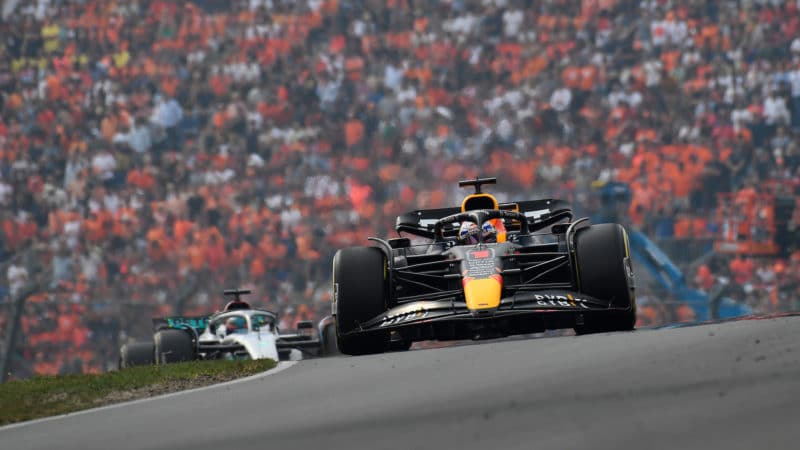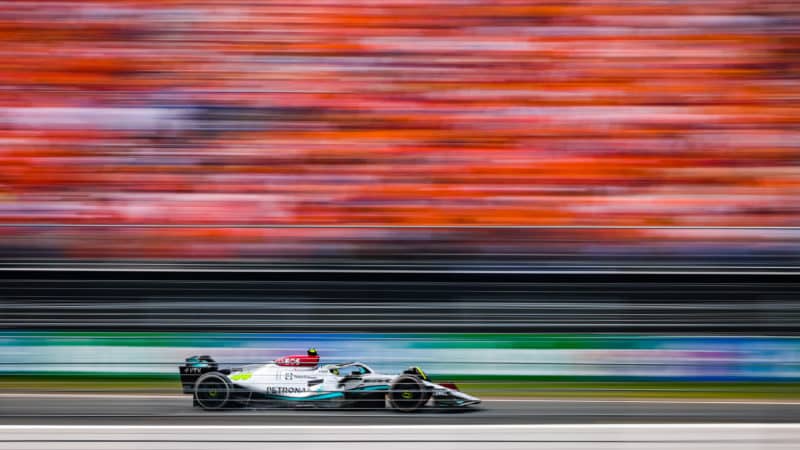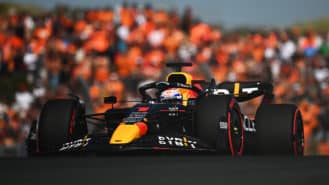The Mercedes works the tyre quite differently to most cars and the circuit grip here ramps up spectacularly. That combination made the hard tyre a more than viable option for Mercedes and therefore it became possible for them to plan around a one-stop strategy. It wasn’t going to beat Verstappen by doing the same. The one-stop gave it something different, facilitated by how it used that C1 tyre.
“[The C1 and C2] are very stiff,” pointed out Verstappen, “and they just didn’t seem to really switch on for us as good as they did for [Mercedes].”
So two-stopping Red Bull and Ferrari began the race on the soft tyres (which had a range here of around 20 laps, easily enough to get the front-runners clear of the midfield pack before the first stops), with one-stopping Mercedes on the mediums.
Verstappen and Leclerc took off in grid formation, with Max always able to keep himself out of the Ferrari’s DRS reach. Any time Leclerc pushed up to close the gap, Verstappen was able to respond and Leclerc’s rear tyres would begin to get too hot. Behind him, Sainz was in tyre management mode from the third lap, the problem much more acute for him for reasons not yet understood and he fell back. Hamilton on his mediums was able to run at Sainz’s pace quite comfortably. A little further back, Russell found he could run at Perez’s soft-tyre pace too.
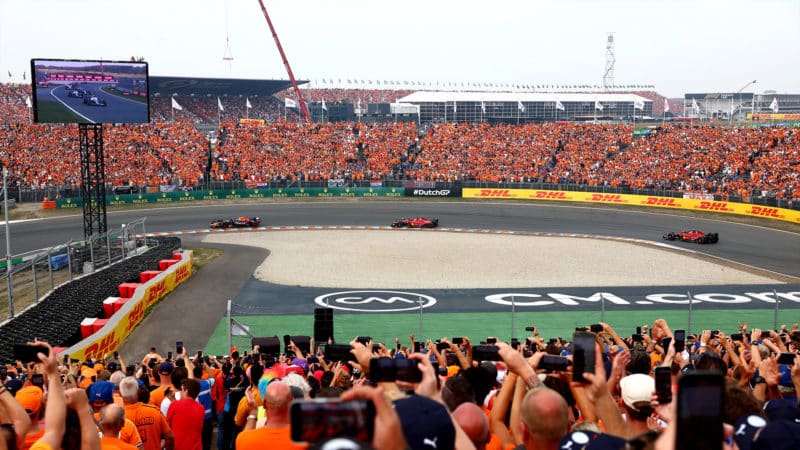
Ferraris stayed close to Verstappen, but never in overtaking range
Lars Baron/F1 via Getty Images
As Ferrari saw Red Bull preparing to bring Perez in on lap 14, realising it presented an undercut threat to Sainz, Carlos was instructed at very late notice (at the last corner) to pit. The call came too late for the mechanics, who did not have all four tyres ready. There was a 10sec delay as Sainz waited for the left-rear to be brought from the garage.
But the significant Ferrari stop was that of Leclerc three laps later. This one went more smoothly as he was switched from softs to mediums, obliging Verstappen to do the same on the next lap. So with both Red Bulls and both Ferraris out of the way for now, Hamilton and Russell were running 1-2 for Mercedes and more than happy with how their strategy was panning out.
They would stay out there until around lap 30, by which time Verstappen, on tyres 18 laps newer, was just about up with them. He DRS’d his way by Russell and was about to do the same to Hamilton as the latter pitted for his hard tyres, on which he planned to go to the end. Russell was in for a set of the same a couple of laps later.
Hamilton’s stop put Verstappen back in the lead but he’d need to be taking the 21sec time loss of an extra stop. Hamilton was within less than 21sec of him almost immediately after rejoining, going significantly faster on his hards than Verstappen on his older mediums. Russell was only a tenth or so slower and he too would be less than a pit stop’s-worth of gap behind Verstappen soon enough.
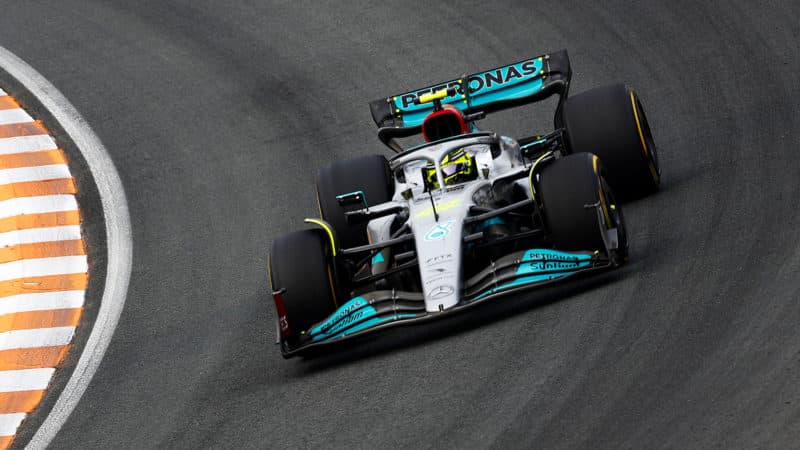
Long first stint brought Hamilton into contention for victory
LAT via Mercedes
Which meant of course that if he was to deliver the victory the thousands of watching fans assumed was a formality, Verstappen was going to have to catch and pass both Mercs after he stopped. That was going to be such an exciting spectacle. Red Bull planned to run long enough to get Verstappen onto the softs to maximise his grip advantage for the laps in which he was going to have to catch and pass the two silver cars.
It wouldn’t be easy, but looked perfectly do-able. Passing with DRS – with the range extended since last year by including the final corner in the DRS zone – was quite feasible and the Red Bull enjoyed greater straightline speed than the Mercedes. Red Bull’s calculations had him coming out in third around 7-8s behind Hamilton with 20-ish laps to go. On new soft tyres he’d have initially been faster by 2s or more. He looked sure to catch them but how would they fight the battle as he did? We looked forward to finding out.
Tsunoda and the VSC
That was all rendered irrelevant by a VSC for Tsunoda’s broken-down AlphaTauri. Given that this is Red Bull’s junior team, conspiracy theories that it was a phantom problem designed just to give Verstappen a free pit stop came instantly. But it doesn’t bear scrutiny. There was clearly, audibly, something very wrong with the AlphaTauri as Tsuonda pulled out the pitlane at his second attempt at rejoining the race. Go in-car with him and you can hear how it struggles to get underway and is accompanied by a mechanical clattering suggesting a major problem in the transmission. This was no phantom problem. It was very real.
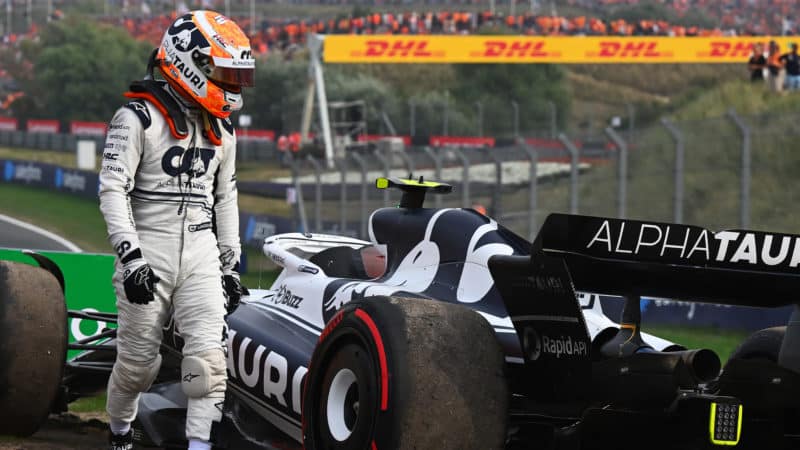
Tsunoda’s concern about loose wheel was actually a diff issue
Clive Mason/Getty Images
He’d made the original stop for new tyres but as he rejoined he could feel the car pulling and noticed the steering wheel to be offset. He was having to steer to go straight and assumed that a wheel had not been tightened. He reported it and was told to pull the car off. He did so and began preparing to get out. The team radioed saying it could see no problem with the wheels and after confirming with him that the tyres were all inflated, requested that he bring it slowly back to the pits where they would check it and fit another set of tyres. He told them they would need to re-do his belts when he stopped.
As he left the pits with the graunching of broken components, there was still something wrong with how the car was steering. “I think it might be the diff,” he reported. So he was told to pull off again. This created the VSC which allowed Verstappen to get his second pit stop for free. He would no longer have to overtake the Mercs to win. He’d come out still in front of them.
Not only was the mechanical problem very evidently real, but to have orchestrated such a move when Verstappen was looking likely to win even without this intervention, which simply made it easier, just doesn’t stack up. In championship terms it’s not as if he desperately needs every point he can get either. To risk exclusion from the championship for such an unrequired bit of help would be bizarre in the extreme. Forget the conspiracy, it was just a broken diff.
But the credibility punishment F1 takes from the events of Abu Dhabi last year continues.
Sting in the tail
Because Hamilton and Russell had already lost position to Verstappen because of the VSC, there was no reason not to take new tyres as the field circulated at VSC speeds. Hamilton and Russell thus took on a set of fresh mediums each and rejoined still around 15sec behind.
They were significantly faster on those mediums than Verstappen on his new hards. But not by enough to have stood any chance of catching him in the remaining 20-odd laps after the restart.
Eight laps after that restart Bottas’ Alfa broke down at the end of the pit straight and out came the safety car.
This eliminated the 11sec gap Hamilton still trailed Verstappen by, which was good for Mercedes. But when cars were instructed to drive through the pitlane for a lap to avoid the scene of the Alfa’s rescue, it made a pit stop even cheaper and presented both Red Bull and Mercedes with tough dilemmas. Should Red Bull surrender Verstappen’s lead to ensure he wasn’t on hards at the restart, in the knowledge that if they stayed out, the Mercs would likely stop for softs and be far faster? Yes, Verstappen was brought in.
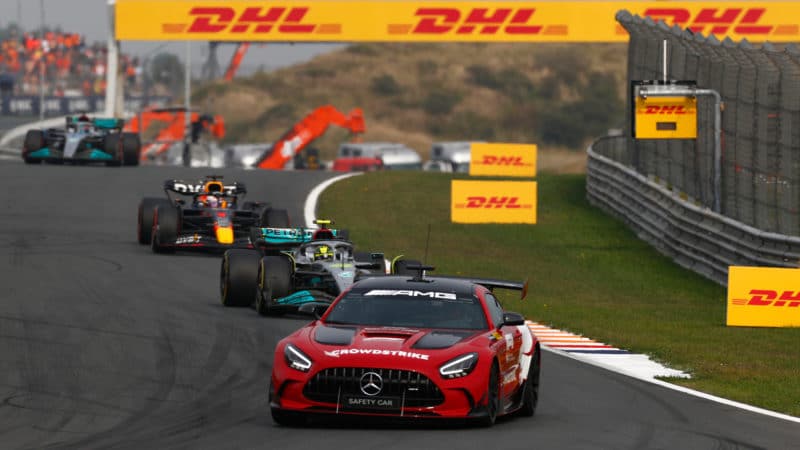
Russell’s stop for softs meant Verstappen was right on Hamilton’s tail at the restart
LAT via Mercedes
How should Mercedes react to that? In the moment of split-second decision? To bring Hamilton in from what was now the lead and probably Russell too? If the changed to softs to match Verstappen they’d lose Hamilton’s track and they didn’t have the straightline speed to pass the Red Bull. Earlier, they’d not been able to pass the Ferraris even with DRS help on track despite being faster. So Hamilton was left out on his newish mediums. Russell was pushing for the softs – and the team acquiesced. That way, it felt it had two possible ways of dealing with Verstappen, defence and attack respectively for Hamilton and Russell.
Hamilton was of course dismayed, with his buffer to Verstappen gone.
Wrong Mode
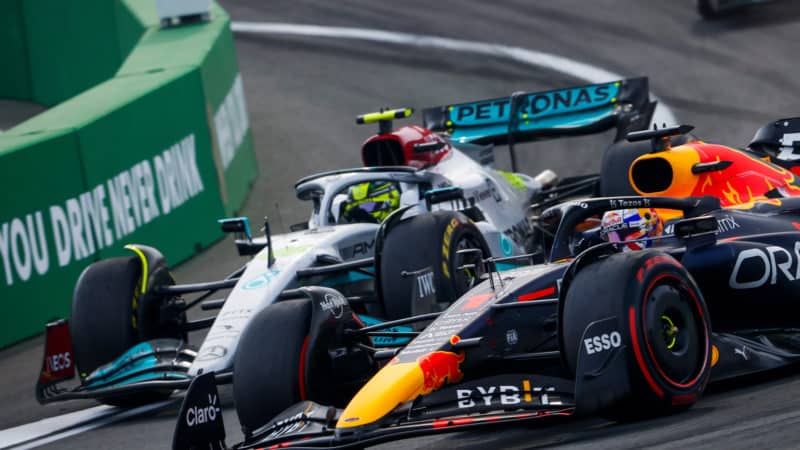
Wrong engine mode for Hamilton made it easy for Verstappen to pass at the restart
Antonin Vincent / DPPI
Hamilton on his old tyres was sure to have been passed anyway – by the new-tyred Verstappen, Russell and Leclerc – but he made it far easier for Verstappen than it otherwise would have been by inadvertently selecting the wrong engine mode for the restart. Hence Verstappen came past him virtually immediately, without even needing the tow.
So that’s how it panned out. Sainz on new softs passed Perez on new mediums for fifth but took a 5s penalty for an unsafe pit release which dropped him to an official eighth behind the battling Fernando Alonso and Lando Norris. The former emerged on top, a wonderful feisty drive from 13th on the grid. But the crowd probably barely noticed. The orange fog descended and the bass pumped up. Zandvoort was happy. Hamilton was not.
